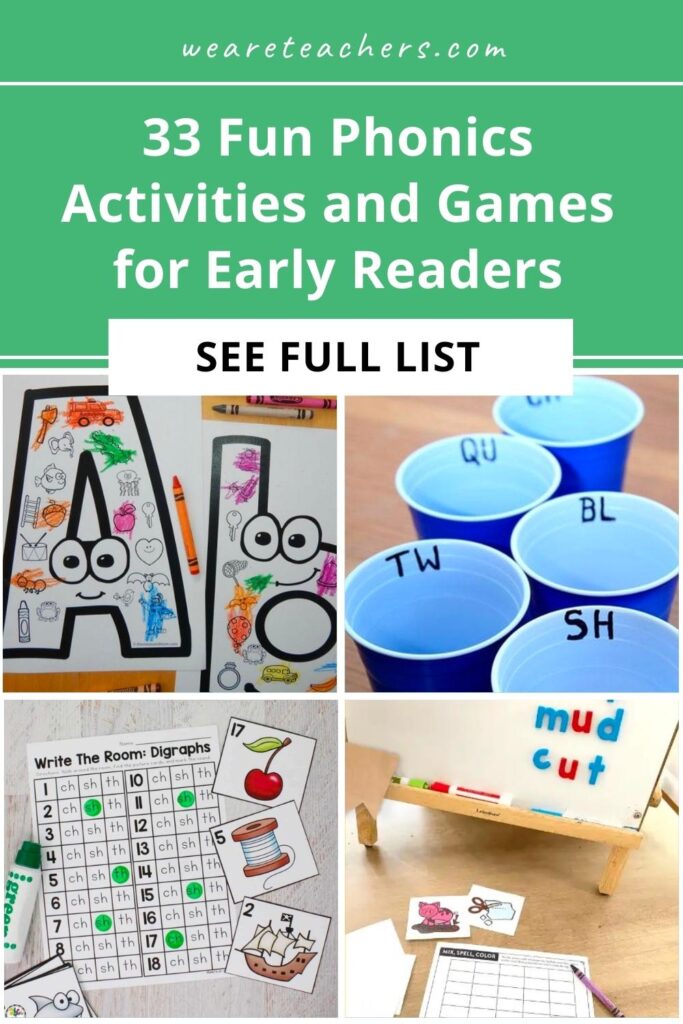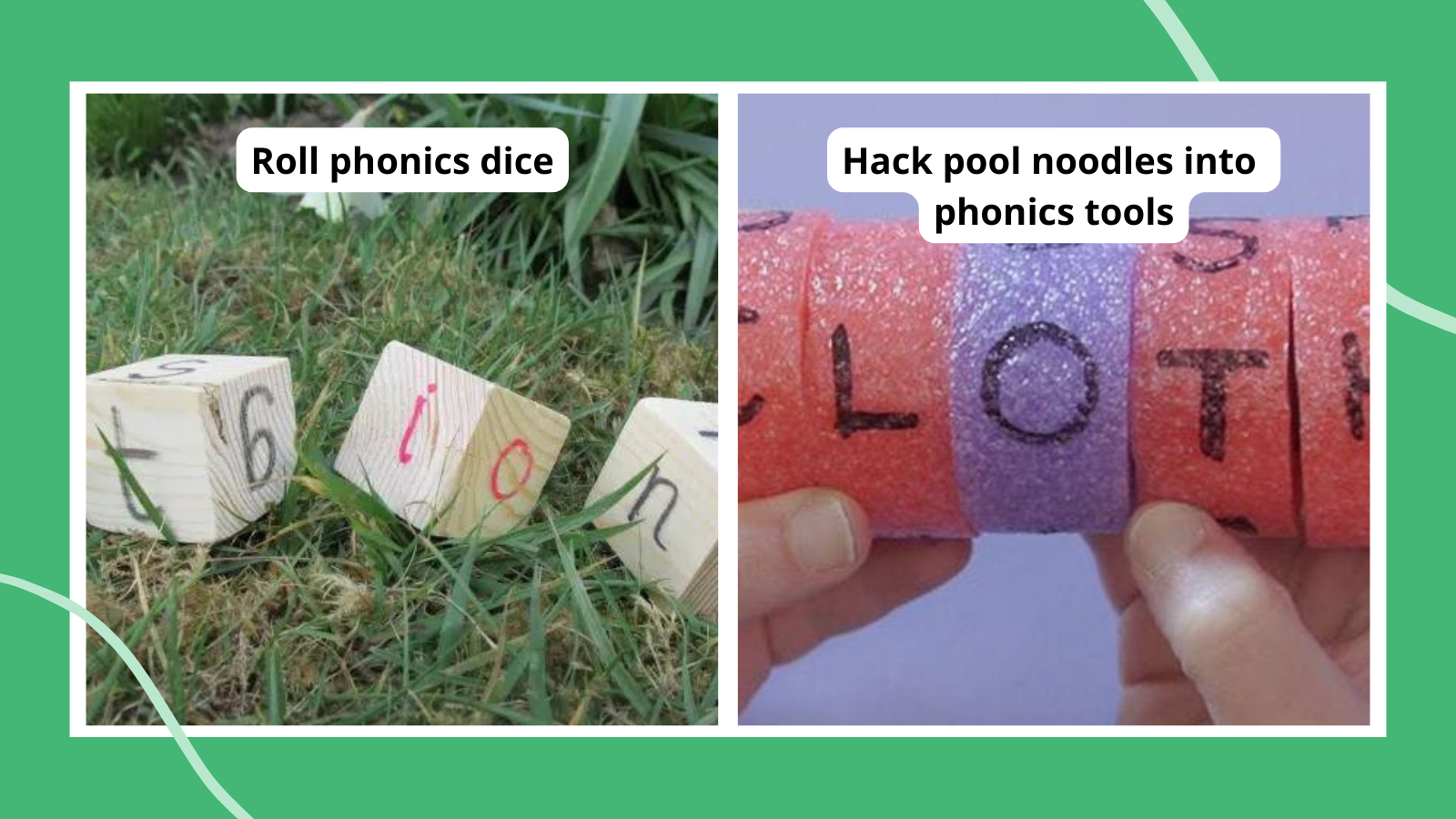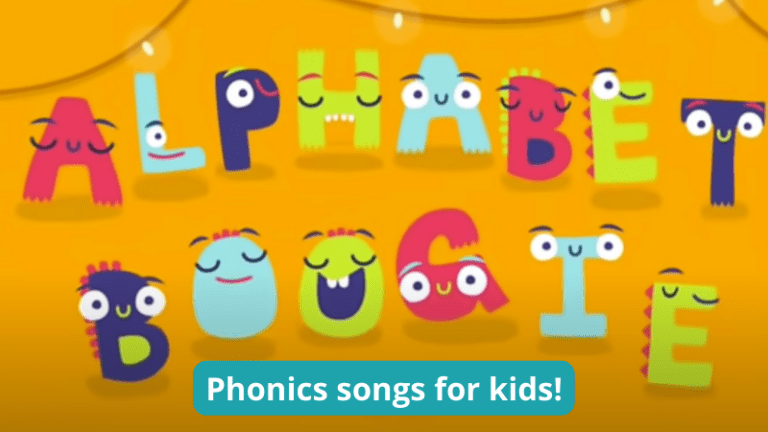Phonics is one of the fundamental building blocks of early literacy. Understanding the alphabet principle, or that letters have predictable sounds that form words, is an important component of beginning phonics instruction. As students learn about these letter-sound relationships and develop phonemic awareness, students can start to read and spell words. While a systematic and explicit approach is the best way to teach phonics, it’s also important to reinforce new learning through games and other fun activities. Here are some of our favorite ways to teach and consolidate these key skills.
1. Sing a phonics song
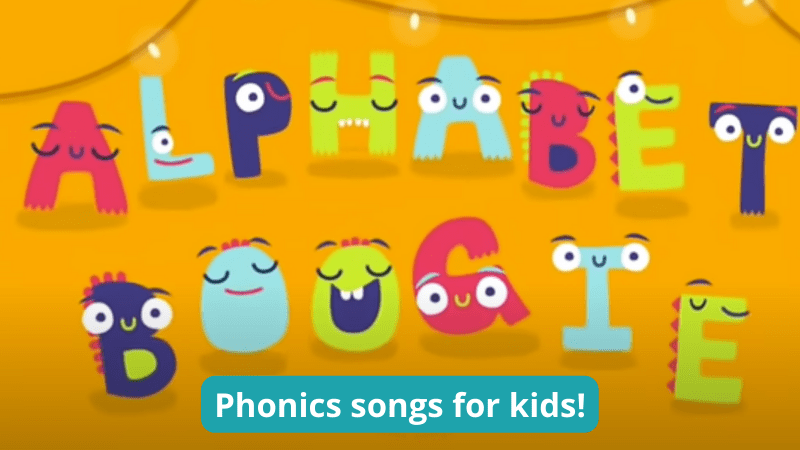
Singing songs is such a fun and effective way to learn! Kids will love to watch and sing along, and might not even realize they’re learning along the way. Check out our 15 Phonics Songs for Kids for some inspiration!
2. Reading
Does reading count as a phonics activity? Absolutely! While reading a book aloud doesn’t necessarily target specific phonics skills, it still serves a valuable purpose in understanding the building blocks of reading. When we read to kids, we show them how words and sounds add up to something bigger, like reading a story, which is the purpose of reading instruction! To make it more targeted, pick out important phonics features as you read, such as letter names and sounds, vowel teams, rhymes, and much more.
3. Flip the pizza
This simple game is a great way to reinforce automaticity with letter recognition. Cut out several circles out of colored construction paper to resemble mini pizzas. Write one letter on the back of each pizza. Using a spatula, kids flip over the pizzas and read the letter name on the back or say the sound the letter makes.
4. Hang phonics anchor charts
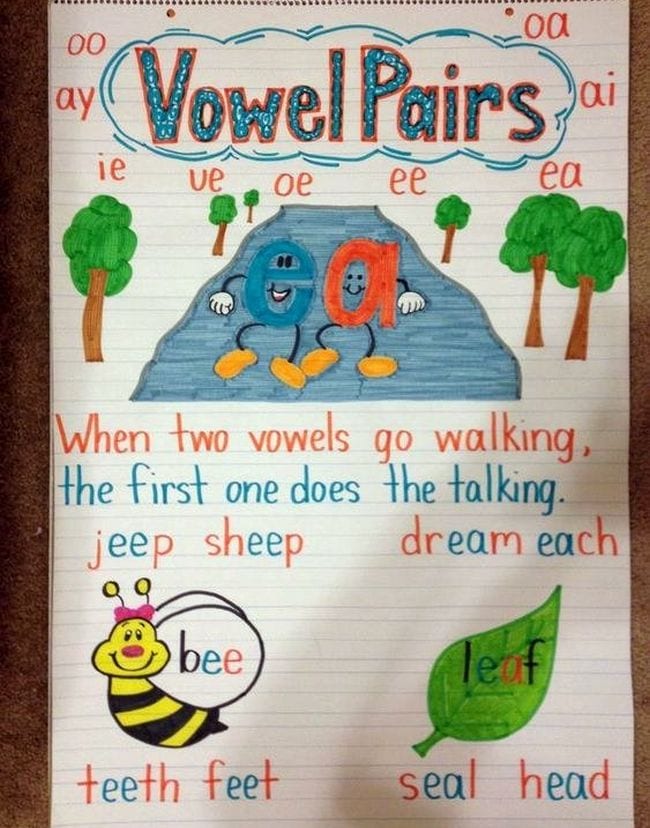
There’s a lot to remember when learning new phonics skills. To help reinforce new concepts, post anchor charts around the room to help kids remember rules like silent E, vowel teams, and hard and soft C and G. Here are 20 Perfect Anchor Charts for Teaching Phonics and Blends to get you started.
5. Use a chart to practice saying beginning sounds
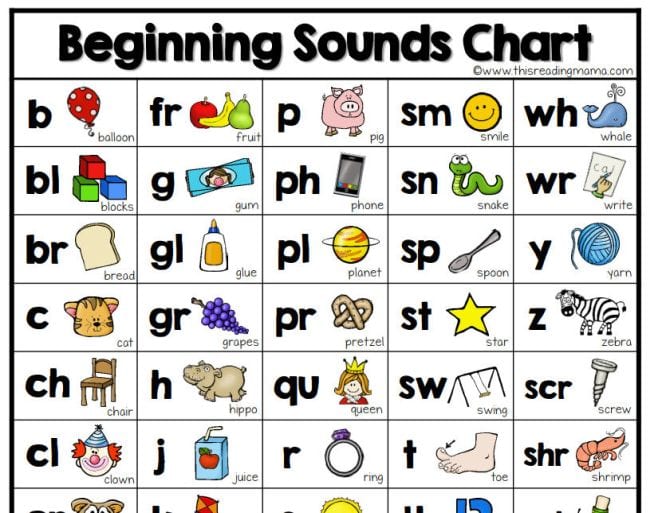
Many reading programs come with their own letter sound chart. If you don’t have access to one, there are so many online resources you can use to print your own. Similar to anchor charts, displaying an alphabet chart with corresponding pictures boosts letter-sound recognition and automaticity.
[contextly_auto_sidebar]
6. Go fish
This classic game can be adapted to any skill or lesson! First, make cards with target patterns or letters. Some examples of skills to work on are capital/lowercase letters, vowel team matching, or digraphs. Students ask each other if they have a card to make a match. They might say “Do you have any cards with the ee vowel team?” If the other student doesn’t, they say “Go fish!” and the student who asked picks up a card from the pile. Students set down a match after getting one. The person with the most matches at the end wins!
7. Slap the letter sounds
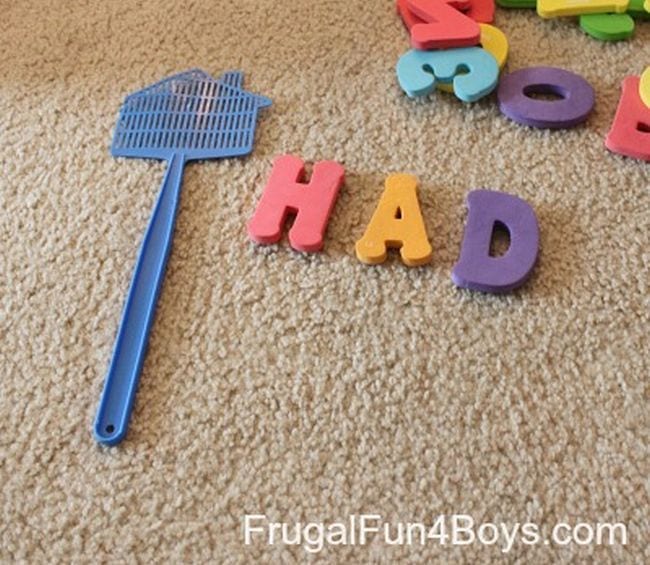
Sounding out words letter by letter is way more fun with a flyswatter! All you need for this activity are foam or magnetic letters (or even printed letters) and a flyswatter. Make a word and have students swat each letter as they say the sounds. This is a great idea for active learners. Touching each sound can help students remember them as they blend the words.
8. Word walk
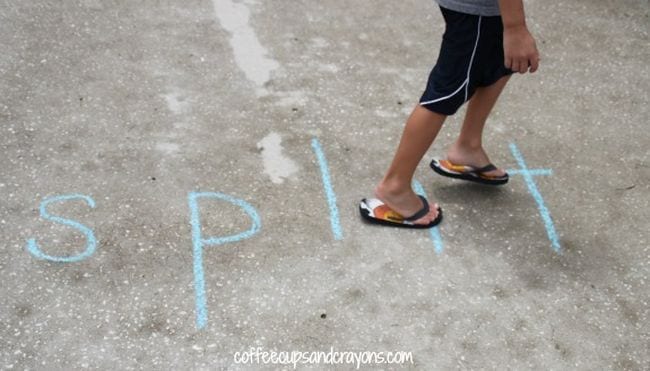
This one will also keep active learners moving and happy! Write words in sidewalk chalk, then walk (or hop or skip) along them, sounding the word out along the way. Simple but fun!
9. Grow flower
We love this gentler, more positive version of Hangman. Think of a word and write down blank spaces for the number of letters in the word. When someone guesses a letter correctly, fill in the letter in the blank spot. If a letter is not correct, draw a stem. Then, add flower petals for each incorrect letter. Students try to guess the word before you fill in the whole flower. This a great transition game when you have a few extra minutes during the day!
10. Rhyme sparkle
How many rhymes can you find? Say a word that has many possible rhymes. While standing in a circle, each student comes up with a word that rhymes with it. If they can’t think of a rhyme, they sit down. If there are no new rhymes, give them a new word. Keep going until there’s only one student left!
11. Make magic spoons
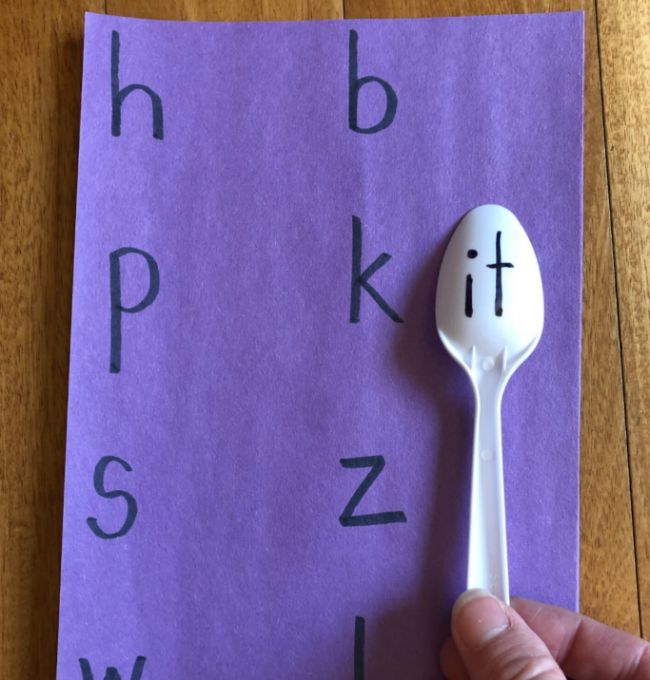
Pick up a pack of plastic spoons at the dollar store, then use them to practice building words by combining beginning sounds with word endings. Write beginning or ending patterns on a spoon and the other parts of the word on a piece of paper. Practice reading mixed and matched words by moving the spoon around to create new words.
12. Toss and blend with plastic cups

Grab a stack of plastic cups and some Ping-Pong balls for this fun phonics game. Label the cups with different letter blends and set them out (tape them down if they tend to fall over). Kids toss a ball into a cup, then think of a word that uses that letter blend to earn a point.
13. Flip the pages
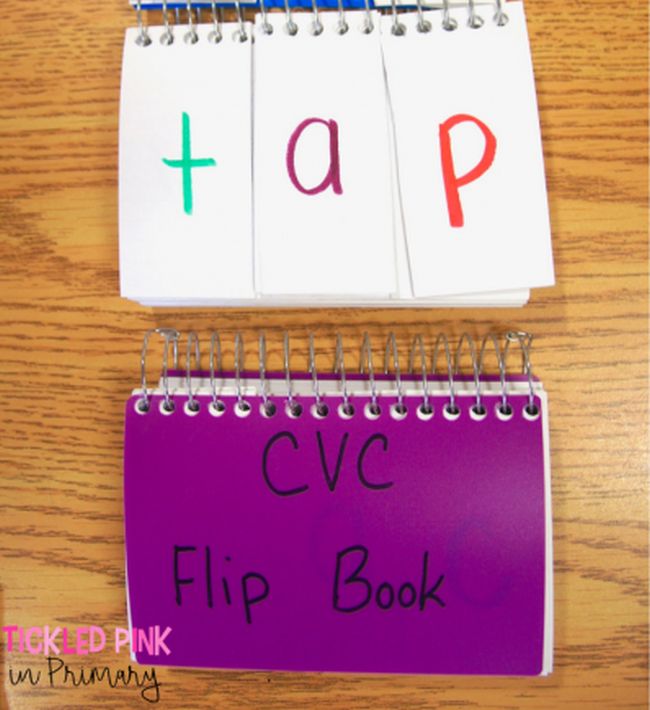
Divide the pages of a small notebook into thirds, then write letters on each page. Flip them to form new words. The easiest version is CVC words, where the vowels would go in the middle. You can also easily differentiate this activity with blends, vowel teams, and more!
14. Mix and match cups to make words
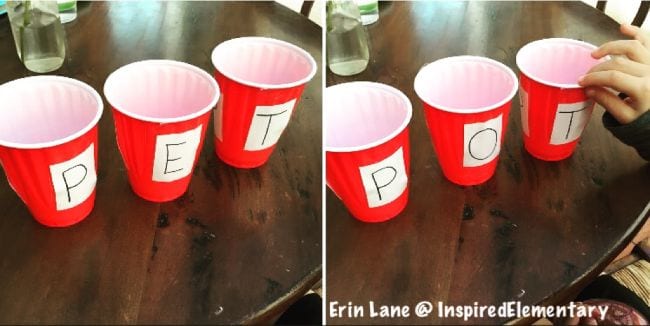
Another great plastic cup activity! Label each cup with letters, blends, or vowel teams, then use them to mix and match words. This hands-on game makes decoding practice refreshing and exciting.
15. Hack pool noodles into phonics tools
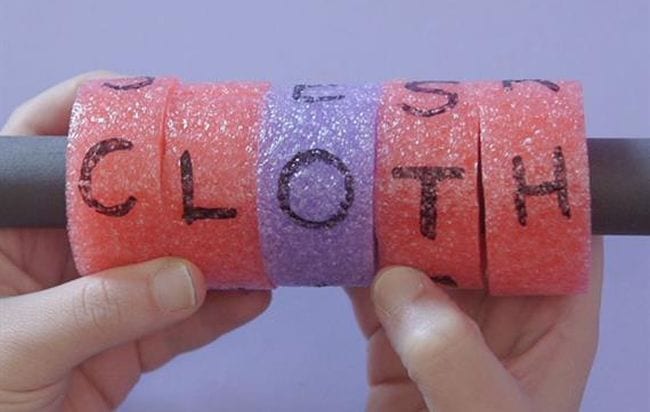
This pool noodle game has got to be one of our favorite phonics activities. Cut a pool noodle into pieces and label it with letters. Then stack and spin for learning fun!
16. Spin and rhyme
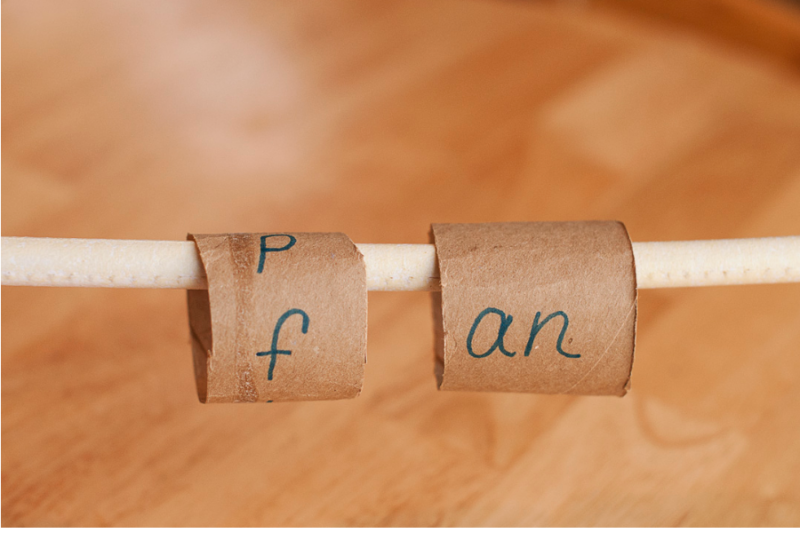
Here’s a different spin (pun intended!) on Pool Noodle Phonics. All you need is a cardboard tube, a wire pants hanger, scissors, and a marker to make this fun DIY blending activity. Write several beginning sounds on one of the tubes and place it on the wire hanger. Then, make a tube with vowel sounds for the middle, and then ending letters on the last tube. Students spin each tube to create new words.
17. Make some phonics cubes
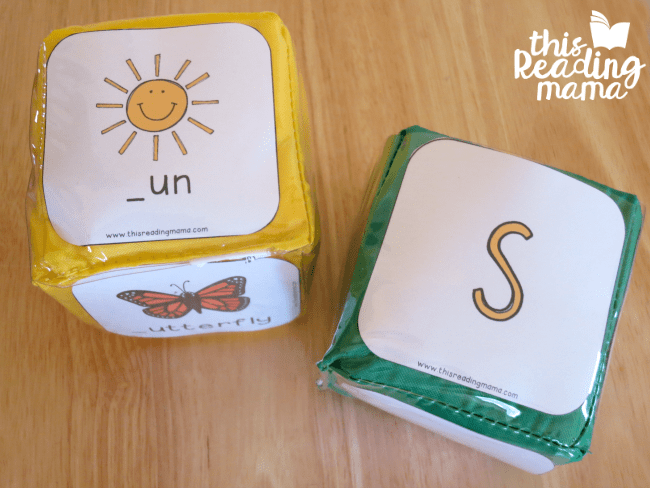
Make two sets of cubes with beginning and ending chunks. Then roll until you get the correct combination of letter and word ending. This digraph blending resource from the Florida Center for Reading Research is a great place to start. Create your own cubes for any type of phonics skills
18. Use paint stirrers to make word pull-outs
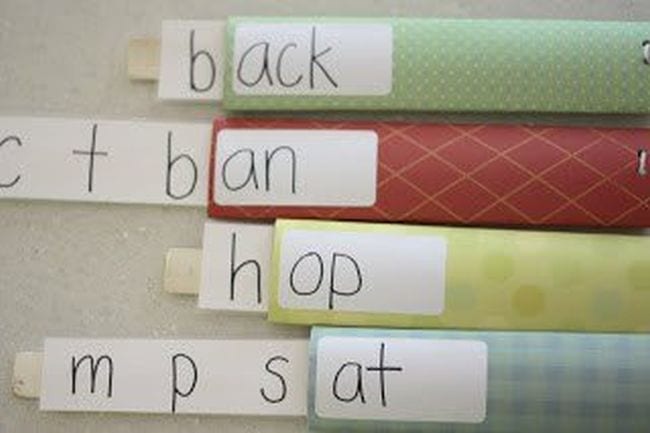
These clever phonics tools are easy to make using paint stirrer sticks and paper towel tubes. On a paint stick, write down letters to use as beginning sounds. On paper towel tubes, write down ending chunks. Simply slide the paint stick in and out of the tube to make new words!
19. Hopstotch
Make squares on the floor with tape or outside with chalk. Place a word card next to or inside each square. Students play by jumping to each square and reading the words as they go. Include words with targeted phonics patterns for students to practice again and again.
20. Use a pocket chart for phonics activities
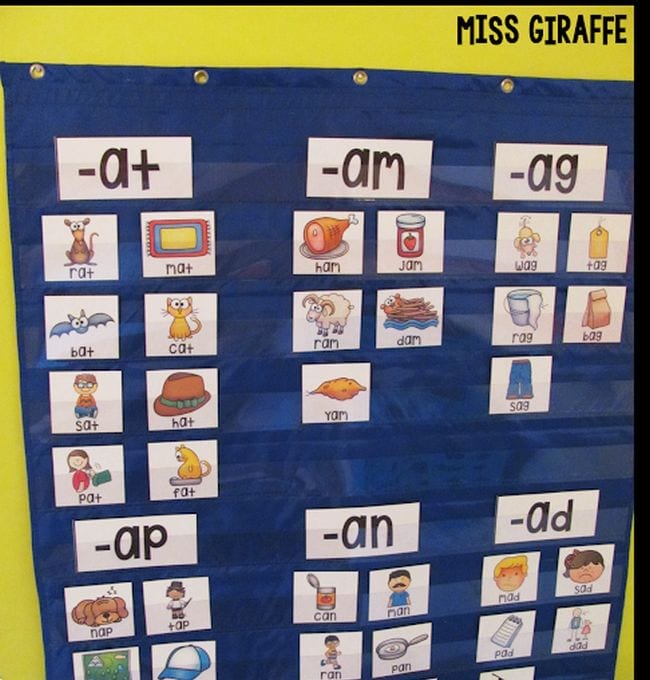
Here’s another reason teachers love pocket charts: They’re great for phonics centers. Place a target sound or pattern in the pocket chart and then have students sort and match cards into the spots underneath. This is a great way to practice beginning sounds, blends, short and long vowels, and so much more.
21. Play Bingo
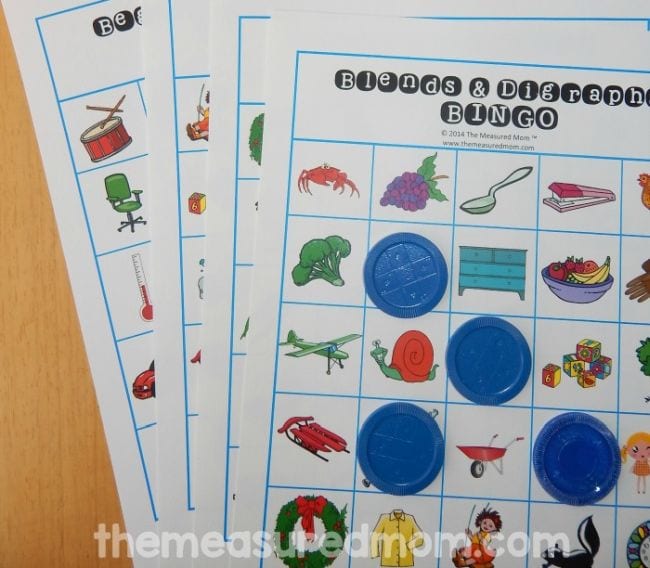
Every kid loves a good game of bingo. You can create bingo boards to focus on any phonics skills. Print out letters, words, or patterns on paper in grids. Try to make each board slightly different. Call out letters or words and kids put counters on the correct answer. Play five in a row or blackout!
22. Toss some phonics water balloons
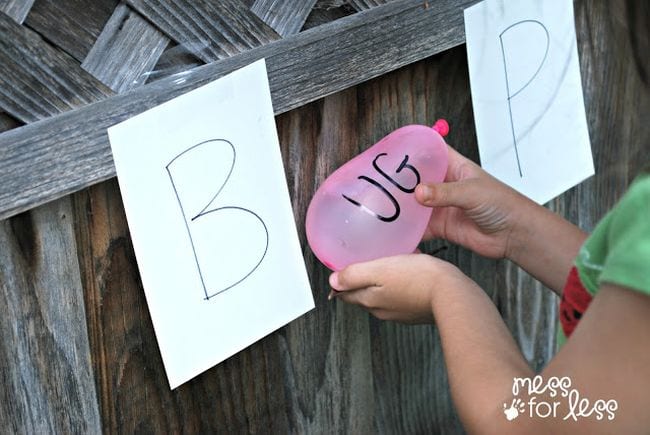
This one almost seems too fun to count as learning! Tape up beginning-sound cards (outside is easiest for clean-up!) and write different ending chunks on the water balloons. Toss the balloon next to the sound card and then say the completed word after you throw it.
23. I spy
I spy is always a favorite. And you can play it anywhere, anytime. Start with the phrase “I spy with my little eye…” and then add something to look for to practice a phonics skill. For example, you could say “I spy something that begins with the letter n” or “that says /n/”. You could also mix it up by looking for rhymes “I spy something that rhymes with…” The possibilities are endless!
24. Word memory game
There are so many ways to customize this game! One version is to match picture cards and their corresponding words. Spread out an even number of matched cards. Take turns flipping over two cards and read the word or words to see if it’s a match. Another idea is to match vowel teams or the same high-frequency words.
25. Play Phonogram Connect 4
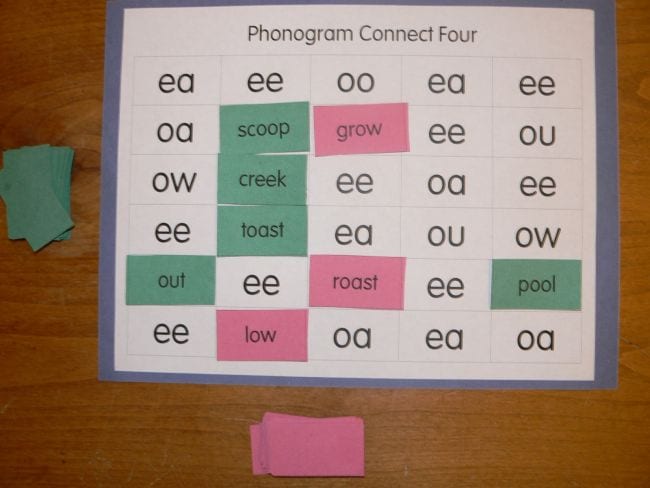
This connect-four game is a variation of bingo to help reinforce vowel teams. Create a board with a grid similar to bingo with targeted vowel teams repeated. Make cards of words that have these vowels teams in them. Students pick up the word card, read it, and match it to the matching phonogram on the board. For example, the word card might be “boat” and the student would find “oa” on the board and place the card on this spot. Your goal is to get four in a row!
26. Alphabet sound race
Spread out for this fun, fast-paced game to boost letter-sound recognition. Place large, magnetic letters on one side of the room and a magnetic board on the other. Call out a letter sound and ask a student to find the letter that makes that sound. For example, you might say: “Find the letter that says /p./” The student runs across the run to grab it and places it on the magnetic board. Mix it up for simple letter recognition and ask them to grab the letter X, for example.
27. Letter says
We all love the classic game, Simon says. Try this letter-based version to boost automaticity in letter recognition. The rules are the same as the original but the cues can be anything phonics related. One way to play is to hand out letter cards to students and say “Simon says, hold up the letter C.” Students with this letter hold up their card. Or, focus on letter-sound correspondence instead. Say, “Simon says, think of a word that starts with the letter M” and have students shout out their answers.
28. Write the Room: Digraphs
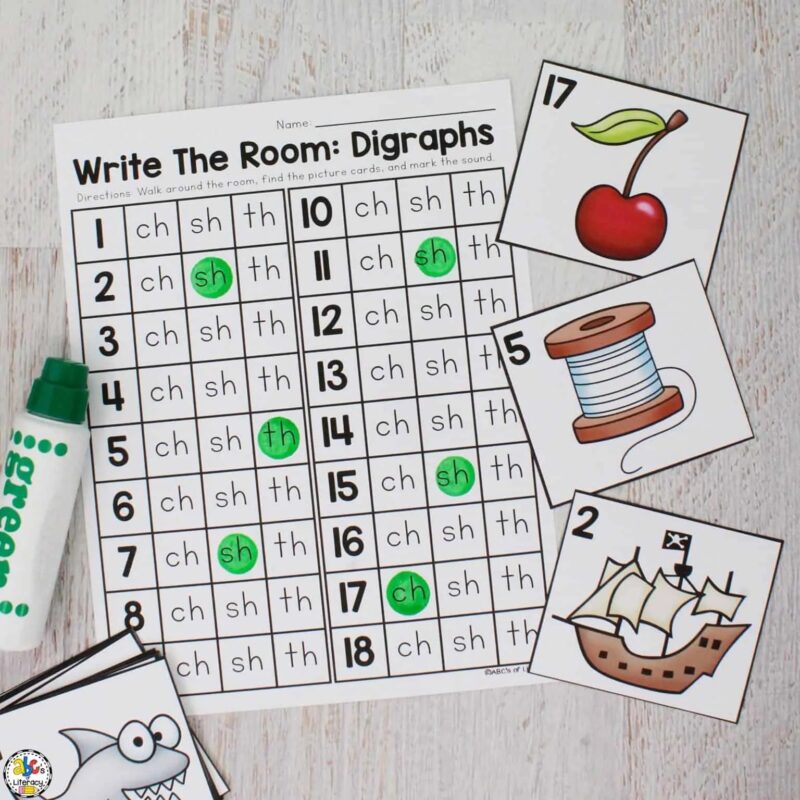
Play a letter scavenger hunt to move around the room to search for pictures with digraphs. Put up pictures of words with digraphs and have students search for them. Write a number on each picture. Students have a clipboard and a list with numbers. Beside each number is a list of digraphs. Students circle or color in the correct digraph that goes with the picture. For example, if the first picture is “chair,” the student would mark “ch” on number one on the worksheet.
29. Use disappearing ink for letter formation
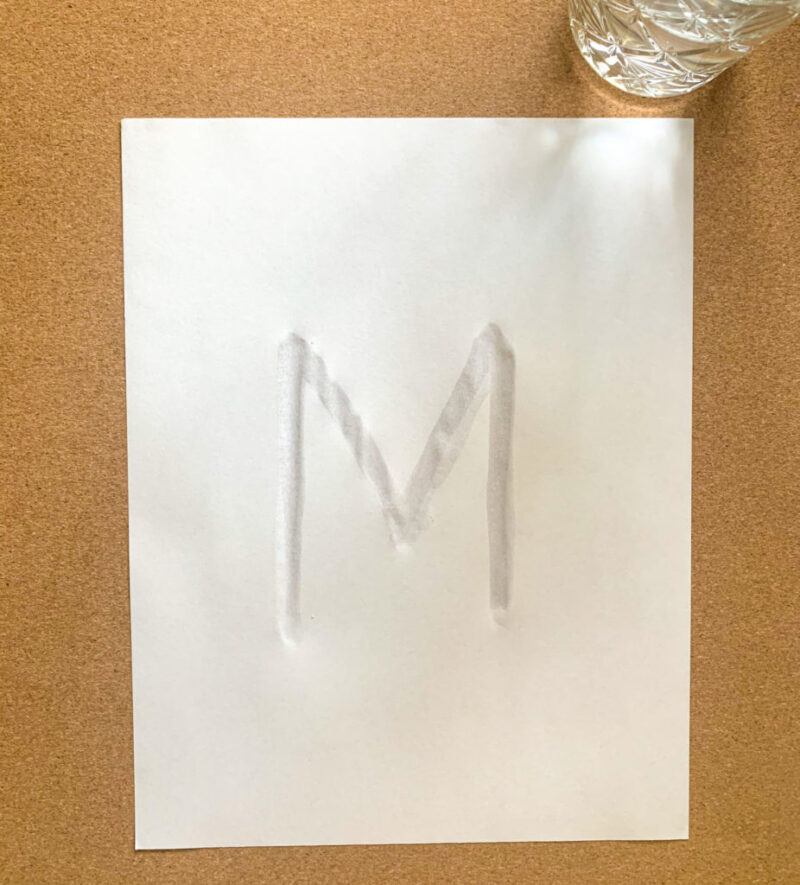
One of the first keys to early reading success is letter identification and formation. Keep it fresh by using “disappearing ink” (aka water) to practice this skill. After you write a letter using water, students must trace it multiple times to prevent it from disappearing too fast. With so few materials and such high engagement, what’s not to love?
30. Do word sorts
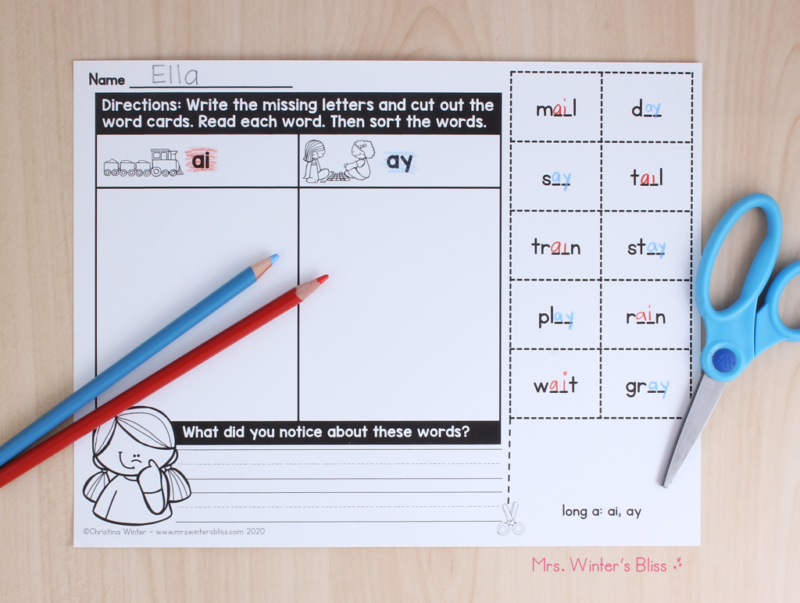
Word sorts are great for comparing word patterns that make the same sound, like vowel teams. They can also help reinforce so many different phonics skills, making them the perfect activity that can be easily differentiated for learners of all stages. To do a word sort, create cards with new letter or spelling patterns that you can distinguish. Students sort words into categories, depending on the phonics feature. Short and long vowels also make a great word sort.
31. Roll and read
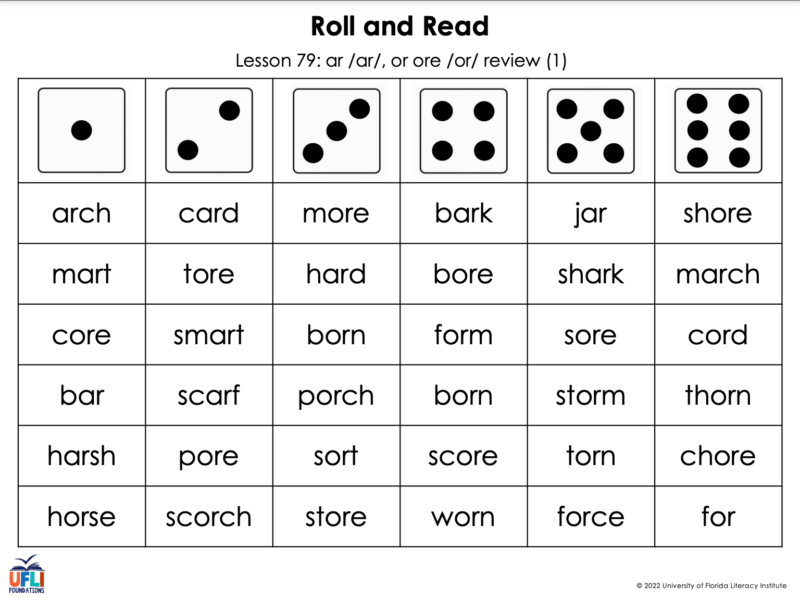
Roll a die and read the word from the corresponding column. Play with a partner or do it solo by coloring in the words as you read them. For bossy R syllables, like “or” and “ar,” check out Lesson 79 Roll and Read at UFLI. While you’re there, be sure to browse the extensive list of free UFLI lesson resources, which include decodable passages and games for almost every phonics skill!
32. Roll letter dice
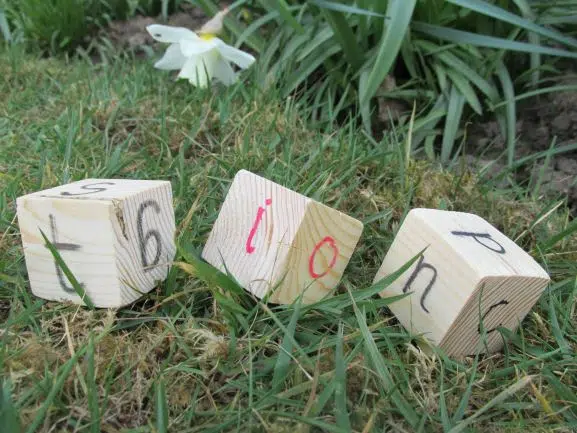
A perfect DIY idea for old blocks! Use three blocks and write consonants on two of them and vowels on the other. Have some fun rolling and blending CVC words.
33. Color the phonics sound
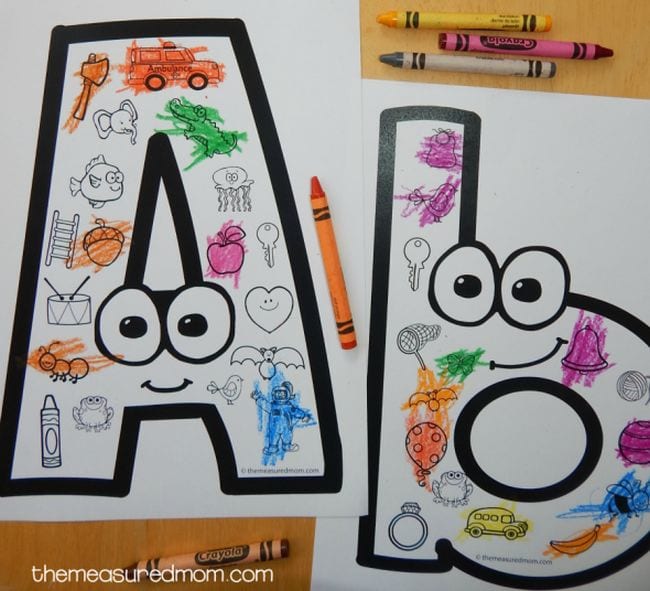
Most kids start learning phonics by mastering the beginning sounds of words. Print pictures of items with targeted initial sounds and students can color in the pictures that start with the matching sound. You could also do the middle or ending sound too.
34. Word ladder
Create a chain of words by changing only one letter at a time. Start with a word at the bottom of the ladder and change one sound to make a new word. For example, start with the word “fun” and go up the ladder: fun-run-runt-bunt-bent-sent. You can easily differentiate ladders based on skill and ability.
35. Fill in the missing letters
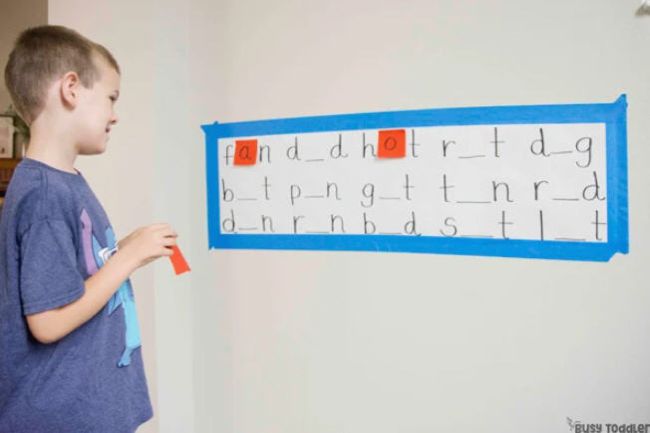
This active game combines a scavenger hunt with phonics! Hide sticky notes around the room with various vowels. Then, write CVC words with the vowels missing. Have kids hunt for the missing sounds and fill them in. Fun!
36. Letter bag
Fill a brown paper bag with many foam or magnetic letters. Students reach into the bag and grab a letter. They can simply say the letter name or sound. Or, extend it by having students color or fill in letter outlines with their matching letters. Alternatively, students can name the letter and think of a word that starts with the letter. It’s so fun to see what letter everyone gets!
37. Sort syllable types
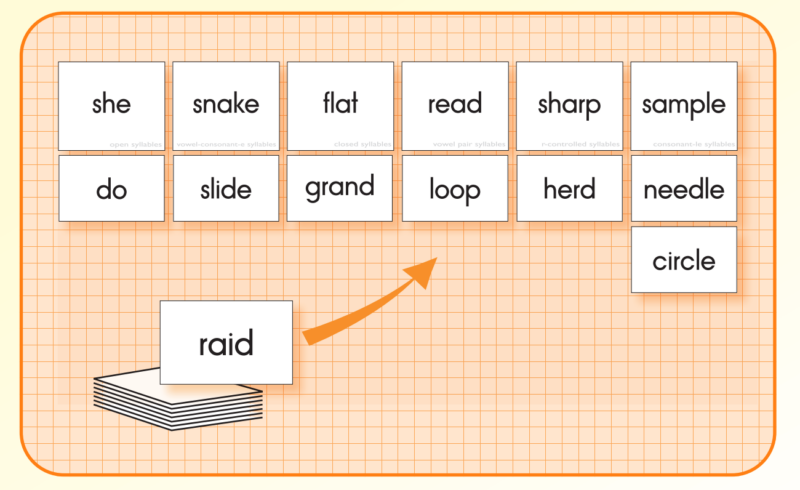
If you are teaching the different syllable types, this word sort helps students practice their knowledge of the six types and shows you what they know. For all six types, try the Six-Way Syllable Sort at the Florida Center for Reading Research. Also, check out the many other phonics resources available by grade level: Kindergarten and First Grade or Second and Third Grades.
38. Try locks and keys to learn phonics
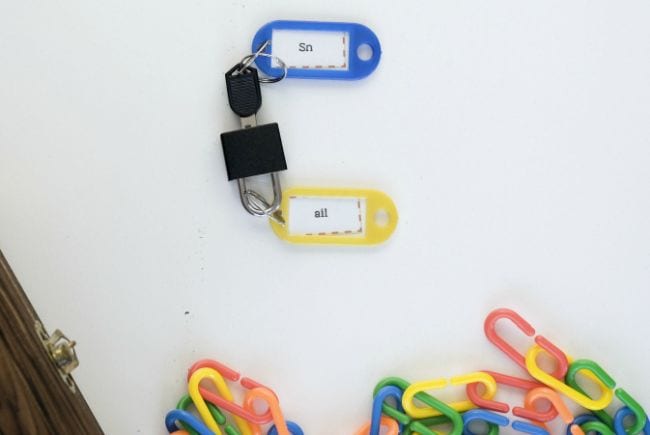
This self-correcting phonics activity is also a good way to practice fine motor skills … and a lot of fun to boot! Label keys with beginning sounds and locks with word endings, then match them up and try the key to see if you’re right.
39. Word roller
Grab a ball and some letter cards for this fun, interactive activity. Roll the ball to a student while showing them a letter card. The student names the letter and comes up with a word that starts with that sound. Next, they roll the ball to someone else, who has to say another word with the same beginning sound. Move on to another letter after a few turns.
40. Use Google slides
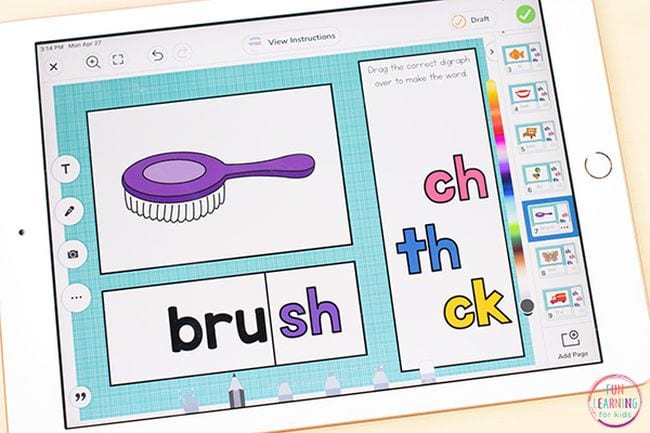
Google Slides has tons of fun phonics activities kids can use in the classroom or at home. There are some wonderful online resources for any type of skill. Find 18 Interactive Google Slides for Teaching Phonics and Sight Words to learn mor
Looking for more phonics activities? Learn What Makes a Good Decodable Text here.
Get all the latest teaching tips and ideas straight to your inbox when you sign up for our free newsletters!
